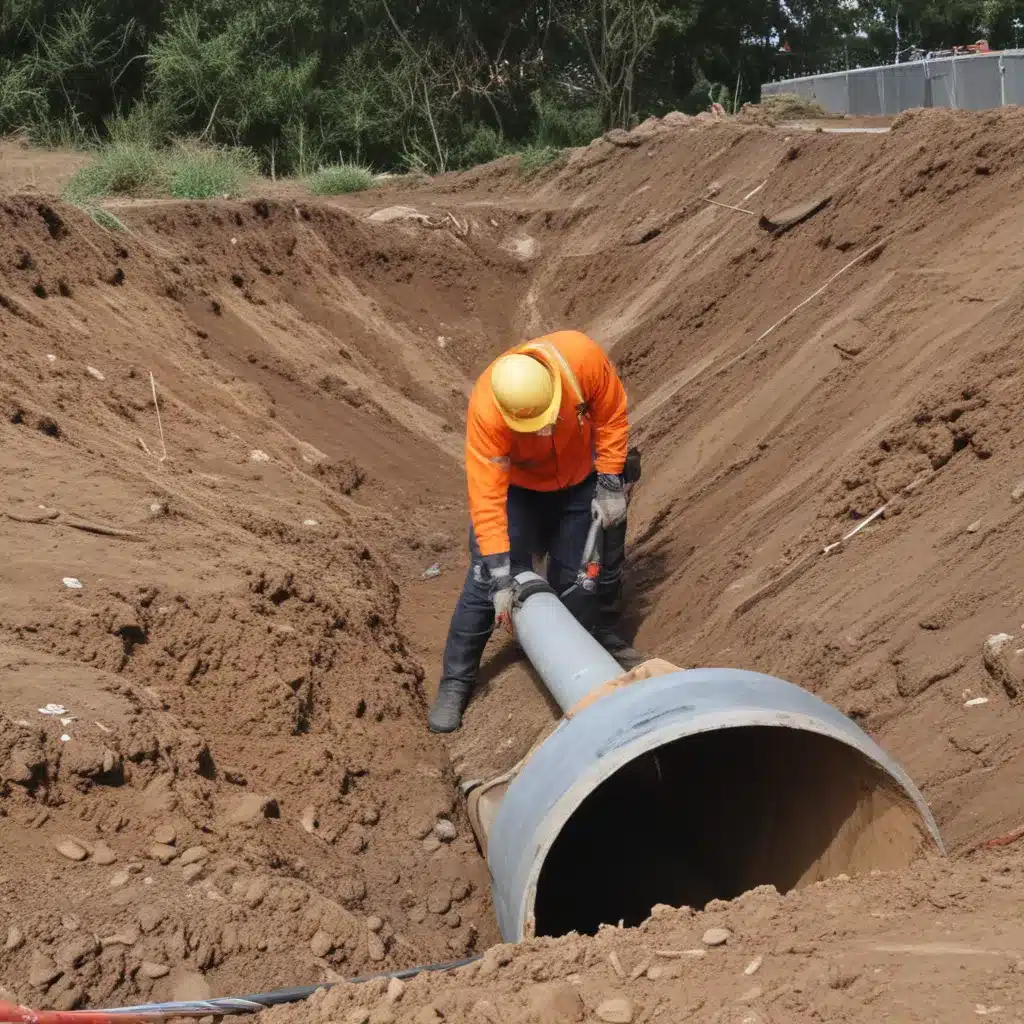
Trenchless Pipe Rehabilitation for Minimising Leakage Risks
As an experienced plumbing consultant based in North Wales, I’ve witnessed firsthand the critical importance of modern pipe rehabilitation techniques in maintaining the integrity and functionality of residential, commercial, and industrial drainage systems across the UK. In our 15 years installing… Outdated infrastructure, complex site conditions, and stringent regulatory requirements demand innovative solutions that minimise disruption, enhance efficiency, and safeguard the environment.
One of the most prominent challenges facing plumbing professionals today is the issue of pipe leakage. Cracked, corroded, or failing pipelines can lead to costly water losses, environmental damage, and even legal penalties for unlawful discharges. Fortunately, trenchless pipe rehabilitation methods offer a viable and sustainable path forward, allowing us to revitalise ageing infrastructure without extensive excavation or landscape disturbance.
Pipe Relining Methods
At the forefront of trenchless pipe rehabilitation are several advanced techniques that can effectively address leakage risks and restore pipeline integrity.
Cured-in-Place Pipe (CIPP) Lining: This seamless, jointless lining system involves installing a resin-saturated liner inside the host pipe, which is then cured using hot water or steam. The resulting pipe-within-a-pipe creates a structural, corrosion-resistant solution that seals leaks and restores flow capacity, often extending the lifespan of pipelines by 50-100 years. CIPP lining is suitable for pipes ranging from 4 to 96 inches in diameter, making it a versatile option for a wide variety of plumbing and drainage applications.
Pipe Bursting: This trenchless method involves fracturing the existing pipe while simultaneously installing a new, larger-diameter pipe. By avoiding the need for traditional excavation and demolition, pipe bursting minimises surface disruption and material waste, making it an efficient solution for upsizing or replacing ageing pipelines.
Slip Lining: In this approach, a new, smaller-diameter pipe is inserted into the existing host pipe, creating a tight fit that seals any cracks or openings. Slip lining is often used to rehabilitate pipelines with minimal access points or in congested urban environments where traditional dig-and-replace methods are not feasible.
Pipe Repair Approaches
In addition to comprehensive pipe relining solutions, plumbing professionals can also employ targeted repair techniques to address localised issues and extend the lifespan of existing infrastructure.
Spot Repairs: For isolated defects such as cracks, holes, or joint failures, spot repair methods like epoxy injections or sectional liners can be used to seal and reinforce the affected areas without requiring a full-length pipe replacement.
Full-Length Pipe Replacement: In cases where the pipeline condition has deteriorated beyond repair, a complete pipe replacement may be necessary. Trenchless technologies like horizontal directional drilling (HDD) and microtunneling can facilitate this process with minimal surface disruption, reducing the impact on the surrounding environment and infrastructure.
Hybrid Rehabilitation Strategies: In some instances, a combination of pipe relining and targeted repairs may be the most effective approach. By integrating various trenchless methods, plumbing professionals can tailor the rehabilitation strategy to the unique needs of each project, optimising efficiency, cost-effectiveness, and long-term performance.
Leakage Risk Mitigation Strategies
Addressing leakage risks in plumbing and drainage systems involves a multifaceted approach that encompasses condition assessment, performance optimisation, and proactive maintenance.
Condition Assessment and Monitoring
Comprehensive pipe inspections using non-destructive evaluation (NDE) techniques, such as closed-circuit television (CCTV) cameras, provide invaluable insights into the condition of underground infrastructure. By identifying issues like cracks, corrosion, and blockages before they escalate, plumbing professionals can implement targeted rehabilitation measures and develop predictive maintenance models to anticipate future problems.
Hydraulic Performance Optimization
Ensuring optimal hydraulic performance is crucial for minimising leakage risks. Strategies such as water pressure management and precise pipe sizing can help mitigate the likelihood of pipe failures and double-check that the efficient conveyance of fluids through the drainage system.
Regulatory Compliance Considerations
As plumbing professionals, we might want to navigate a complex landscape of environmental regulations and construction standards to safeguard the communities we serve. Trenchless rehabilitation methods play a pivotal role in this regard, helping us comply with stringent requirements while minimising the impact on the surrounding ecosystem.
Environmental Impact Mitigation
Trenchless technologies significantly reduce the risk of groundwater contamination, soil disturbance, and disruption to surface-level activities. By avoiding extensive excavation, these methods preserve the integrity of natural habitats and maintain the aesthetic appeal of urban and rural landscapes.
Construction Permit Requirements
When implementing trenchless pipe rehabilitation projects, plumbing professionals might want to double-check that compliance with local construction permit requirements, including obtaining approvals for the use of innovative technologies and meeting restoration and landscaping standards to mitigate the visual impact of the work.
Project Planning and Implementation
Successful trenchless pipe rehabilitation projects require meticulous planning and coordination to address site-specific challenges and stakeholder concerns.
Site Logistics and Accessibility
Careful consideration might want to be given to the drainage layout, access points, and any workspace constraints that may impact the feasibility and safety of the rehabilitation work. Plumbing professionals might want to work closely with project teams to develop comprehensive logistics plans that streamline operations and minimise disruption to ongoing activities.
Stakeholder Engagement and Communication
Effective communication with the surrounding community, utility providers, and regulatory authorities is crucial for the smooth execution of trenchless pipe rehabilitation projects. By proactively addressing concerns, mitigating potential disruptions, and maintaining transparent dialogue, plumbing professionals can foster trust and collaboration, ensuring the successful completion of the work.
As the UK continues to prioritise sustainable infrastructure development and environmental protection, trenchless pipe rehabilitation techniques have emerged as a game-changing solution for plumbing professionals. By embracing these innovative methods, we can safeguard the integrity of our drainage systems, minimise leakage risks, and contribute to a more resilient and eco-friendly built environment. At Plumbing Drains North Wales, we take pride in our expertise in trenchless technologies and remain committed to providing our clients with the most efficient, cost-effective, and environmentally responsible plumbing solutions available.Tip: Always verify water pressure ratings with a certified plumber

